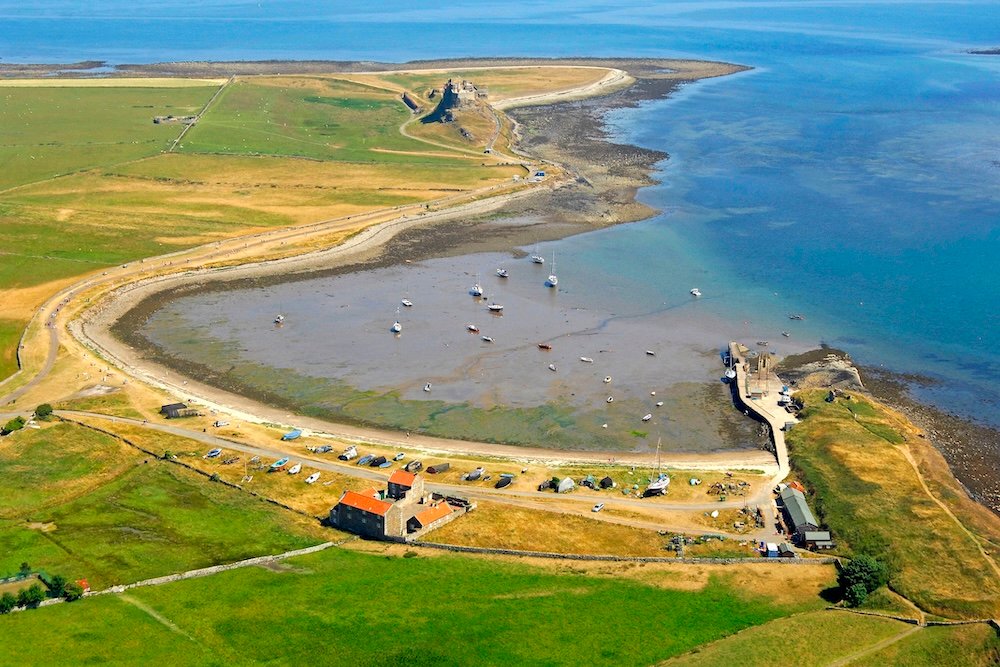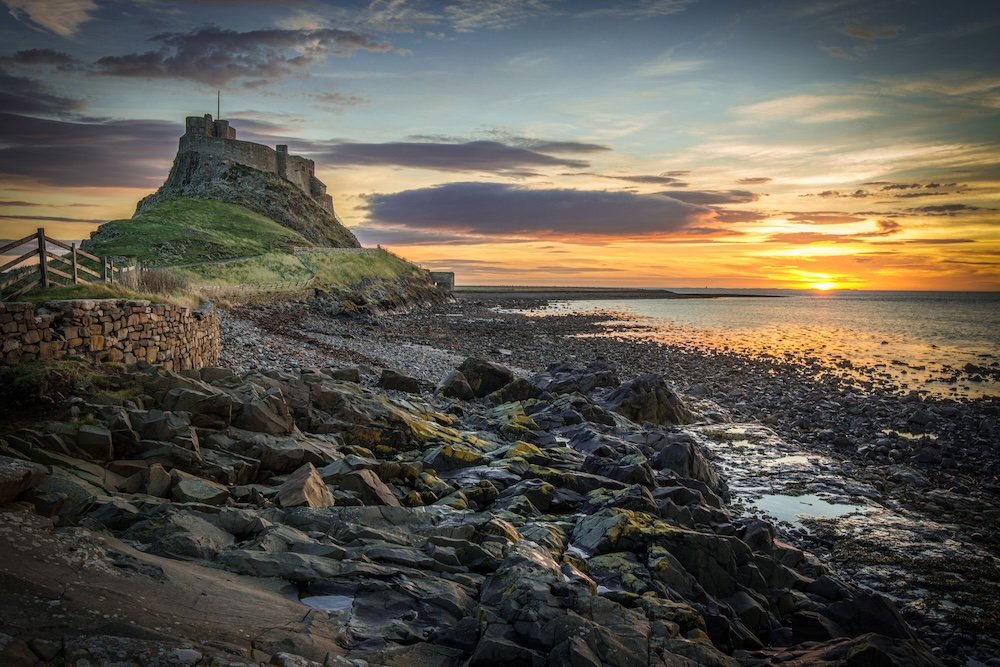
Nestled off the Northumberland coast of England, Holy Island stands as a testament to centuries of history and natural beauty.
Often referred to as Lindisfarne, this small tidal island is steeped in significance, drawing visitors from across the globe to its shores.
The history of Holy Island dates back to the early Celtic Christian era, with its roots intertwined with the establishment of the Lindisfarne Priory in the 7th century.
Situated within close proximity to the Scottish border, Holy Island served as a strategic point for both spiritual and defensive purposes throughout the ages.
What sets Holy Island apart is its ethereal charm, where time seems to stand still amidst the rugged coastline and ancient ruins.
Beyond its historical allure, Holy Island boasts a diverse ecosystem, providing sanctuary for various species of wildlife and offering visitors a tranquil retreat from the bustle of modern life.
In the following sections, we will delve deeper into the treasures awaiting discovery on Holy Island, from its iconic landmarks to its hidden natural wonders, ensuring an unforgettable experience for every traveler who sets foot upon its sacred shores.
Getting to Holy Island
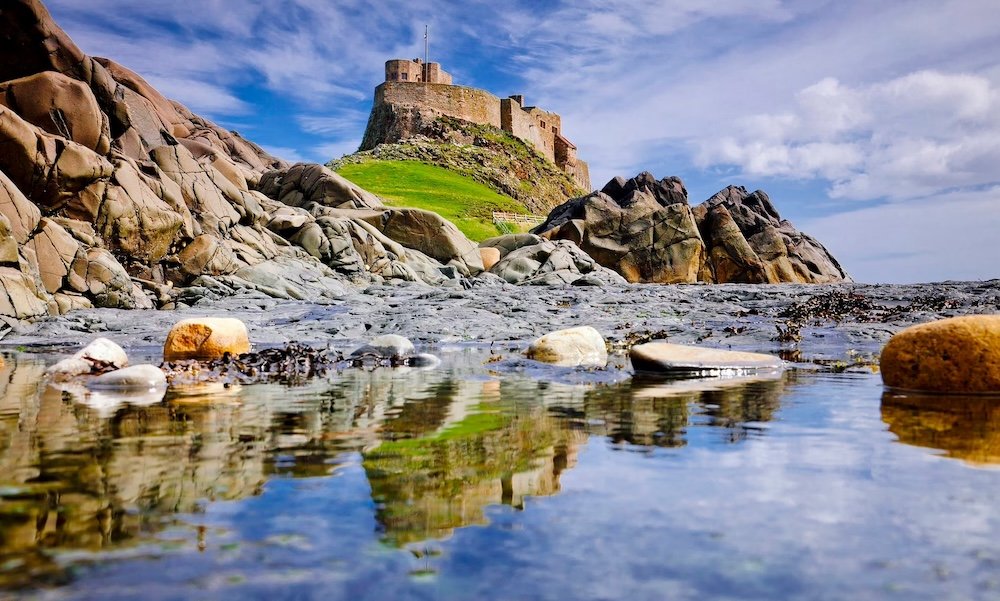
Timing is crucial when planning a visit to Holy Island due to its tidal nature.
The island is accessible by a causeway only during specific times of the day, dictated by the ebb and flow of the North Sea.
It’s essential to consult tide timetables before setting out to ensure a safe and enjoyable trip.
The Holy Island website or local tourist information centers provide up-to-date tide schedules for travelers’ convenience.
Transportation Options
Driving
For those traveling by car, reaching Holy Island involves navigating the causeway, which connects the island to the mainland. The causeway is accessible during low tide, allowing vehicles to cross safely. However, it’s imperative to check tide times beforehand and plan the journey accordingly. Upon arrival, designated parking areas are available for visitors near the village center.
Public Transport
Alternatively, travelers can opt for public transportation options to reach Holy Island. Regular bus services operate from nearby towns such as Berwick-upon-Tweed and Alnwick, providing convenient access for those without access to a vehicle.
Additionally, guided tours may include transportation to Holy Island as part of their itinerary, offering a hassle-free way to explore the area.
Tips for Safe Travel
Crossing the causeway to Holy Island requires careful attention to safety guidelines to avoid the risk of becoming stranded by the incoming tide. Here are some essential tips to ensure a secure journey:
- Check Tide Times: Always consult tide timetables before setting out and plan your visit accordingly. Aim to arrive on the island well before the causeway becomes impassable.
- Follow Signage: Pay close attention to signage along the causeway indicating tidal conditions and safety instructions. These signs provide valuable guidance for travelers.
- Stay Updated: Weather conditions and tidal patterns can change rapidly, affecting access to the island. Stay informed about any updates or warnings issued by local authorities.
- Respect the Sea: The North Sea can be unpredictable, with strong currents and rapidly rising tides. Avoid venturing onto the causeway if conditions are unsafe or if you’re uncertain about the tide status.
- Emergency Information: Familiarize yourself with emergency contact numbers and procedures in case assistance is needed while on the causeway or the island itself.
Historical Attractions
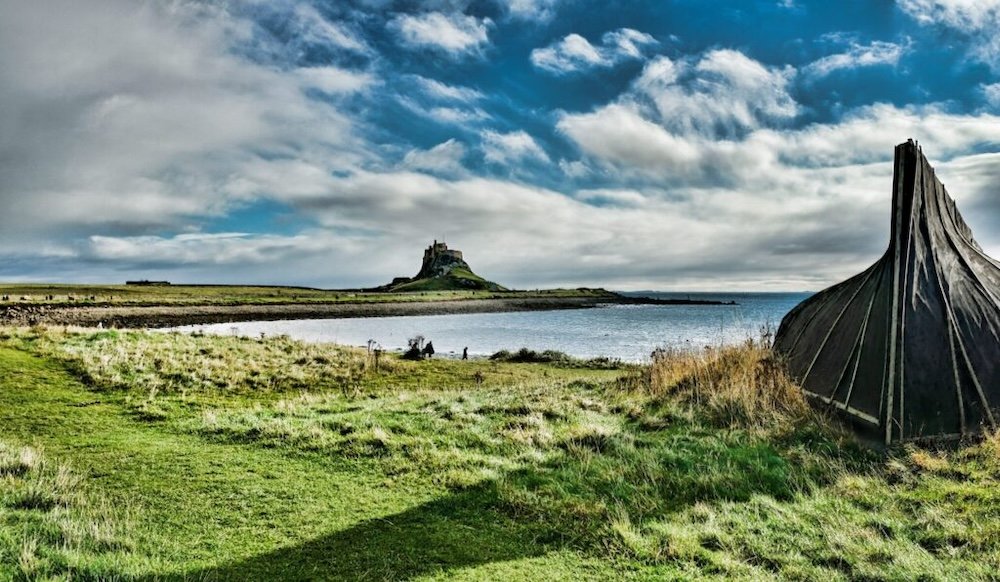
Perched atop a rocky outcrop overlooking the North Sea, Lindisfarne Castle stands as a formidable testament to both military history and architectural ingenuity.
Originally built as a Tudor fort in the 16th century to defend against Scottish raids, the castle underwent significant renovations in the early 20th century under the direction of famed architect Edwin Lutyens.
Visitors to Lindisfarne Castle are treated to a captivating journey through time, exploring its imposing battlements, historic interiors, and stunning panoramic views of the surrounding landscape.
The castle’s unique blend of Tudor and Edwardian architectural styles offers a fascinating glimpse into the evolving tastes and technologies of the era.
When planning a visit to Lindisfarne Castle, consider the following tips:
- Check Opening Hours: Lindisfarne Castle is typically open to visitors from spring to autumn, with varying opening hours throughout the season. Be sure to check the National Trust website or local visitor information for the latest updates.
- Guided Tours: Enhance your experience with a guided tour of the castle, led by knowledgeable staff who provide insight into its rich history and architectural significance.
- Accessibility: While the castle’s historic nature may present challenges for visitors with mobility issues, efforts have been made to improve accessibility where possible. Contact the National Trust in advance to discuss any specific requirements.
Lindisfarne Priory: Importance in Christian History, Artifacts, and Ruins
At the heart of Holy Island lies the ruins of Lindisfarne Priory, a site of immense historical and religious significance.
Founded by St. Aidan in the 7th century, the priory served as a center of Celtic Christianity and played a pivotal role in spreading the faith throughout the region.
Today, visitors can explore the evocative remains of Lindisfarne Priory, including the striking outline of the priory church, the hauntingly beautiful priory gardens, and a collection of intricately carved stone crosses. Exhibits within the visitor center offer further insight into the priory’s history and its enduring legacy.
The Lindisfarne Gospels: Background and Where to View Copies
Among the most cherished treasures associated with Lindisfarne is the Lindisfarne Gospels, a masterpiece of medieval illumination renowned for its exquisite craftsmanship and artistic brilliance.
Created around the year 715 AD, the gospels represent a pinnacle of Anglo-Saxon artistry and spiritual devotion.
While the original Lindisfarne Gospels are housed in the British Library in London, visitors to Holy Island can view high-quality facsimiles and replicas at various locations, including the nearby town of Berwick-upon-Tweed.
These reproductions offer a rare opportunity to experience the beauty and significance of this historic manuscript up close.
Ancient Viking Raids and Their Impact on the Island
Holy Island’s history is punctuated by periods of conflict and upheaval, none more infamous than the series of Viking raids that swept across the region during the 8th and 9th centuries.
These marauding Norsemen brought devastation to Lindisfarne, plundering the priory and terrorizing its inhabitants.
The legacy of these raids is still felt on Holy Island today, with archaeological evidence and historical accounts serving as poignant reminders of the island’s turbulent past.
Despite the challenges posed by these incursions, Holy Island endured, its spirit unbroken and its resilience a testament to the enduring power of faith and community.
As visitors explore the historical attractions of Holy Island, they are invited to reflect on the rich tapestry of events that have shaped its identity over the centuries, from the heights of artistic achievement to the depths of human conflict and resilience.
Natural Attractions
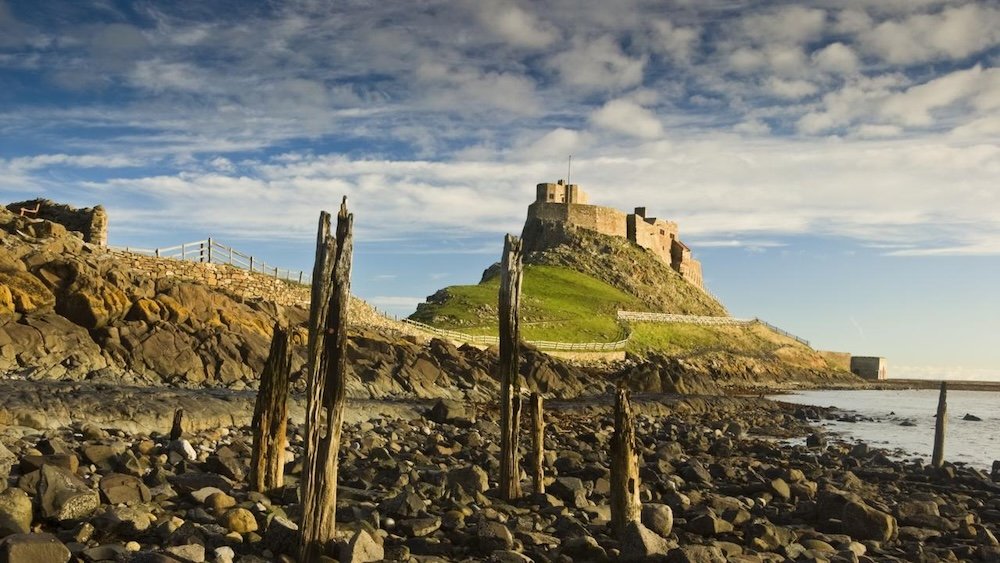
Holy Island’s rugged coastline and diverse habitats provide a haven for a wide array of plant and animal species, each contributing to the island’s rich ecological tapestry.
From windswept dunes to salt marshes teeming with life, Holy Island offers a glimpse into the interconnected web of nature.
Visitors to Holy Island may encounter a variety of plant species adapted to the island’s coastal environment, including sea thrift, sea lavender, and the rare Lindisfarne helleborine orchid.
These resilient plants not only add to the island’s scenic beauty but also play a vital role in supporting local wildlife populations.
Birdwatching Spots and Seasonal Wildlife Observations
For bird enthusiasts, Holy Island is a paradise of avian diversity, attracting migratory birds from across the globe throughout the year.
From wading birds such as curlews and oystercatchers to seabirds like puffins and terns, the island’s coastline and wetlands provide essential habitats for nesting, feeding, and resting.
Popular birdwatching spots on Holy Island include the Castle Point and Heugh, where visitors can observe seabirds nesting on the cliffs and waders foraging along the shoreline.
During the spring and summer months, the island comes alive with the sights and sounds of breeding season, offering unparalleled opportunities for wildlife observation and photography.
Guided Nature Walks and Trails
To fully immerse oneself in the natural beauty of Holy Island, guided nature walks and trails offer an excellent opportunity to explore its diverse landscapes and learn about its unique ecosystems.
Knowledgeable guides lead visitors through a variety of habitats, sharing insights into the island’s geology, flora, and fauna along the way.
Popular nature walks on Holy Island include the St. Cuthbert’s Way pilgrimage route, which traverses the island’s interior and coastal paths, offering panoramic views of the surrounding seascape.
Guided tours may also explore areas such as the Heugh and the Lough, where visitors can observe wildlife in its natural habitat and gain a deeper appreciation for the island’s ecological significance.
Whether strolling along windswept beaches, traversing ancient dunes, or exploring salt marshes alive with birdlife, Holy Island offers endless opportunities for nature enthusiasts to connect with the natural world and experience the wonder of this unique coastal ecosystem.
Cultural and Educational Experiences
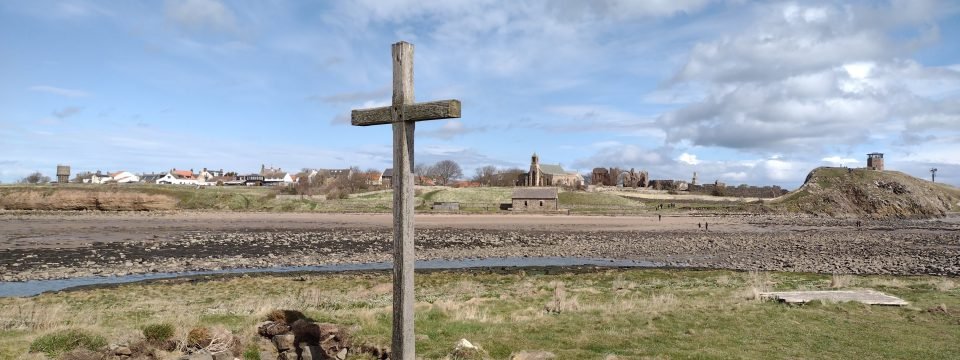
Delve into the rich tapestry of Holy Island’s history and culture by visiting its local museums and visitor centers.
These immersive attractions offer insights into the island’s past, from its early Christian roots to its more recent maritime history.
Lindisfarne Heritage Centre: Located in the heart of the village, the Lindisfarne Heritage Centre provides a captivating journey through the island’s history, from its Celtic Christian origins to the present day. Interactive exhibits, artifacts, and multimedia displays offer a glimpse into the lives of the island’s inhabitants throughout the centuries.
St. Aidan’s Winery: Explore the fascinating history of mead production on Holy Island at St. Aidan’s Winery, where visitors can learn about the ancient art of mead making and sample a selection of locally crafted meads. Guided tours of the winery provide insights into the brewing process and the island’s connection to this historic beverage.
Workshops and Tours
Experience Holy Island’s vibrant culture firsthand through a variety of workshops and tours that celebrate its artistic traditions and craftsmanship. Whether learning the secrets of mead making or mastering traditional crafts, these hands-on experiences offer a unique opportunity to connect with the island’s heritage.
Mead Making Workshops: Join a mead making workshop led by expert brewers and learn the art of crafting this ancient beverage using locally sourced ingredients. Participants have the opportunity to sample different varieties of mead and gain insight into the island’s historical ties to this beloved drink.
Traditional Crafts: Discover the time-honored traditions of Holy Island’s artisans through workshops focused on traditional crafts such as pottery, weaving, and woodcarving. Expert instructors guide participants through the process of creating their own handmade masterpieces, providing a window into the island’s rich cultural heritage.
Educational Programs and Their Schedules
For those eager to deepen their understanding of Holy Island’s history, culture, and natural environment, educational programs offer a wealth of opportunities for learning and exploration. From guided walks to talks by local experts, these programs provide valuable insights into the island’s past and present.
Holy Island Trust Educational Programs: The Holy Island Trust offers a range of educational programs and events throughout the year, catering to visitors of all ages and interests. From guided nature walks to talks on local history and archaeology, these programs provide an immersive learning experience for participants.
Summer Lectures and Workshops: During the summer months, Holy Island plays host to a series of lectures and workshops covering topics ranging from wildlife conservation to maritime history. Led by knowledgeable experts, these events offer a deeper understanding of the island’s natural and cultural heritage.
Spiritual and Reflective Experiences
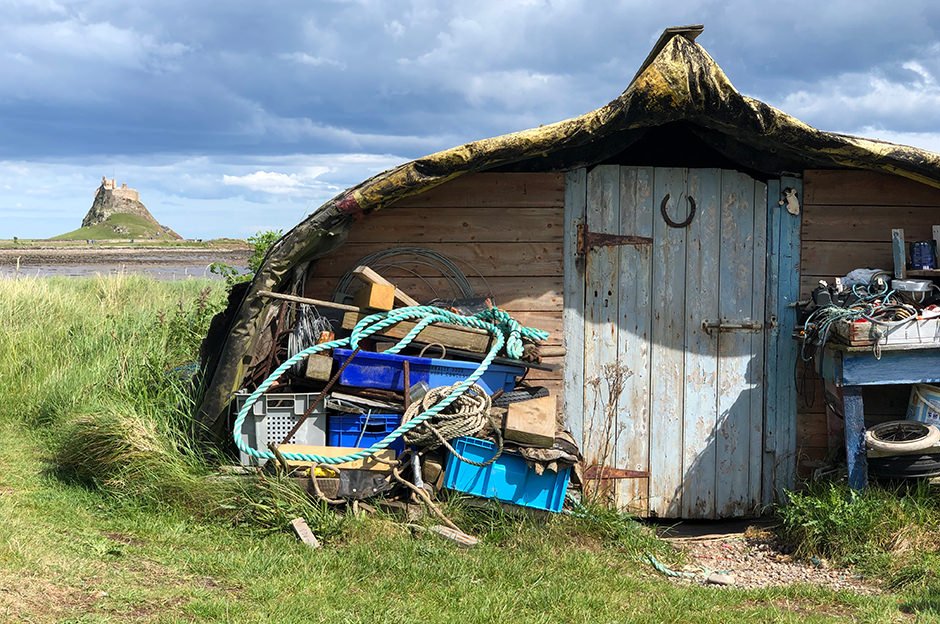
For centuries, Holy Island has served as a sanctuary for seekers of spiritual solitude and contemplation.
Steeped in history and imbued with a palpable sense of tranquility, the island offers a sacred space where visitors can disconnect from the distractions of modern life and reconnect with their inner selves.
Religious Services and Locations for Personal Reflection
Visitors to Holy Island have the opportunity to participate in religious services and find moments of personal reflection in various locations across the island.
St. Mary’s Parish Church: Located in the heart of the village, St. Mary’s Parish Church welcomes visitors to attend services and explore its historic interior, adorned with stained glass windows and intricate woodwork. The church’s peaceful atmosphere provides an ideal setting for quiet contemplation and prayer.
St. Cuthbert’s Chapel: Nestled amidst the dunes overlooking the North Sea, St. Cuthbert’s Chapel offers a serene setting for moments of personal reflection and spiritual connection. Visitors can pause to admire the chapel’s simple beauty and soak in the breathtaking views of the surrounding landscape.
Retreat Centers and Their Offerings
For those seeking a deeper immersion in spiritual practice, retreat centers on Holy Island provide opportunities for extended periods of reflection, meditation, and renewal.
The Open Gate: Situated on the outskirts of the village, The Open Gate offers retreats and workshops focused on mindfulness, meditation, and holistic wellness. Set amidst tranquil gardens and coastal scenery, the center provides a nurturing environment for inner exploration and personal growth.
The Shepherds Dene Retreat Center: Located just a short distance from Holy Island, The Shepherds Dene Retreat Center offers retreats and spiritual programs rooted in Christian tradition. Surrounded by acres of landscaped gardens and woodland, the center provides a peaceful retreat space for individuals and groups seeking spiritual renewal and refreshment.
Outdoor Activities
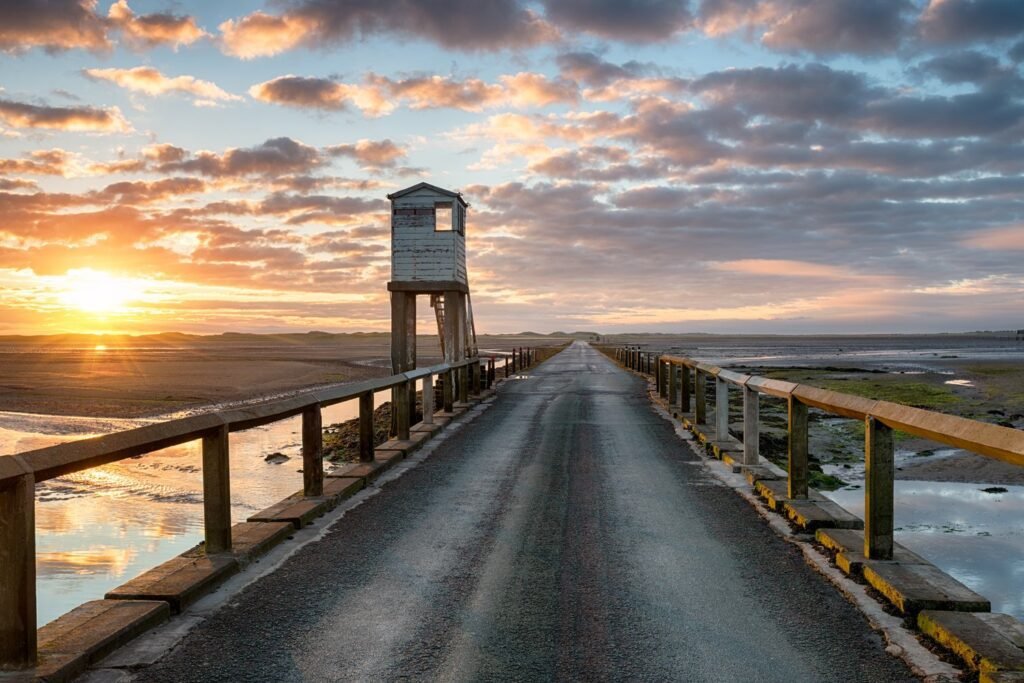
Explore the breathtaking landscapes and rich history of Holy Island through a network of walking and hiking routes that cater to adventurers of all skill levels.
St. Cuthbert’s Way: Embark on a pilgrimage along St. Cuthbert’s Way, a long-distance trail that spans 62 miles from Melrose in Scotland to Holy Island. Along the way, walkers are treated to stunning views of rolling hills, ancient woodlands, and coastal vistas, with Holy Island serving as the trail’s final destination.
Coastal Path: Follow the rugged coastline of Holy Island on the Coastal Path, which offers panoramic views of the North Sea and opportunities to spot seabirds nesting on the cliffs. This scenic route takes walkers past historic landmarks such as Lindisfarne Castle and the ruins of Lindisfarne Priory, providing insights into the island’s rich heritage.
Boating and Fishing Opportunities
Experience the tranquility of the Northumberland coast from a different perspective with boating and fishing excursions around Holy Island.
Boat Trips: Join a boat tour to explore the waters surrounding Holy Island, where knowledgeable guides share stories of the island’s maritime history and point out notable landmarks along the coast. Keep an eye out for seals, dolphins, and other marine wildlife that inhabit these waters.
Fishing Charters: Cast your line into the North Sea with a fishing charter departing from Holy Island, where experienced anglers lead expeditions in search of local fish species such as cod, haddock, and mackerel. Whether you’re a seasoned angler or a novice, these charters offer an exciting opportunity to reel in the catch of the day.
Photography Hotspots and Tips for Capturing Holy Island
Capture the beauty and charm of Holy Island through the lens of your camera, with photography hotspots scattered throughout the island’s landscapes.
Castle Point: Position yourself at Castle Point to capture panoramic views of Lindisfarne Castle against the backdrop of the Northumberland coast. This vantage point offers stunning photo opportunities, especially during sunrise and sunset when the castle is bathed in golden light.
Lindisfarne Priory: Explore the atmospheric ruins of Lindisfarne Priory, where weathered stone walls and ancient archways provide a dramatic backdrop for artistic photography. Experiment with different angles and lighting conditions to capture the essence of this historic site.
Bays and Beaches: Wander along Holy Island’s sandy shores and hidden coves, where tranquil bays and sweeping vistas await. From sandy beaches to rocky outcrops, these coastal landscapes offer endless inspiration for photographers seeking to capture the beauty of the natural world.
Tips for Capturing Holy Island:
- Golden Hours: Make the most of the soft, golden light during the early morning and late afternoon for stunning photographs.
- Composition: Experiment with composition techniques such as leading lines, framing, and rule of thirds to create visually appealing images.
- Weather Considerations: Embrace the ever-changing weather conditions on Holy Island, from dramatic storm clouds to clear blue skies, to add depth and mood to your photos.
- Respect Nature: When photographing wildlife or delicate ecosystems, remember to maintain a respectful distance and avoid disturbing the natural environment.
Local Cuisine and Dining

Holy Island’s culinary scene is as rich and diverse as its history, offering a tantalizing array of dishes that celebrate the region’s heritage and local ingredients.
Northumbrian Stotties: Indulge in a traditional Northumbrian stottie, a hearty round bread roll with a dense texture and crusty exterior. Often filled with locally sourced meats and cheeses, these savory treats are a beloved staple of Northumberland cuisine.
Kippers: Sample the smoky flavors of locally caught kippers, a type of smoked herring that has been a delicacy in the region for centuries. Served hot or cold, kippers are a popular choice for breakfast or as a savory snack throughout the day.
Seafood Platters: Treat yourself to a seafood platter featuring fresh catches from the North Sea, including crab, lobster, and mussels. Accompanied by artisan bread, homemade sauces, and locally sourced produce, these platters showcase the best of Holy Island’s coastal bounty.
Recommended Restaurants and Eateries
Discover a wealth of dining options on Holy Island, ranging from cozy cafes serving homemade treats to fine dining establishments offering gourmet cuisine with a local twist.
The Pilgrims Coffee House: Start your day with a visit to The Pilgrims Coffee House, a charming cafe located near the village center. Enjoy freshly brewed coffee, homemade pastries, and hearty breakfast options in a welcoming atmosphere.
The Ship Inn: Experience the warmth of traditional Northumbrian hospitality at The Ship Inn, a historic pub overlooking the harbor. Feast on classic pub fare made with locally sourced ingredients, accompanied by a selection of fine ales and spirits.
The Crown and Anchor: Indulge in contemporary cuisine with a focus on seasonal ingredients at The Crown and Anchor, a popular restaurant known for its innovative menu and relaxed ambiance. From seafood specials to vegetarian delights, there’s something to satisfy every palate.
Sampling Lindisfarne Mead: History and Where to Buy
No visit to Holy Island is complete without sampling Lindisfarne Mead, a sweet and aromatic honey wine with ancient roots and a rich cultural heritage.
History of Lindisfarne Mead: Dating back to the time of the monks at Lindisfarne Priory, Lindisfarne Mead has been produced on Holy Island for over a thousand years. Crafted from locally sourced honey, water, and yeast, this historic beverage is steeped in tradition and symbolism.
Where to Buy Lindisfarne Mead: Purchase a bottle of Lindisfarne Mead as a memento of your visit to Holy Island from local shops and gift shops in the village. Alternatively, visit St. Aidan’s Winery on the outskirts of the village to learn about the mead-making process and sample a selection of meads crafted on-site.
Whether indulging in local delicacies, dining at recommended eateries, or sampling the historic flavors of Lindisfarne Mead, Holy Island offers a culinary journey that celebrates the region’s heritage and culinary creativity.
Events and Festivities
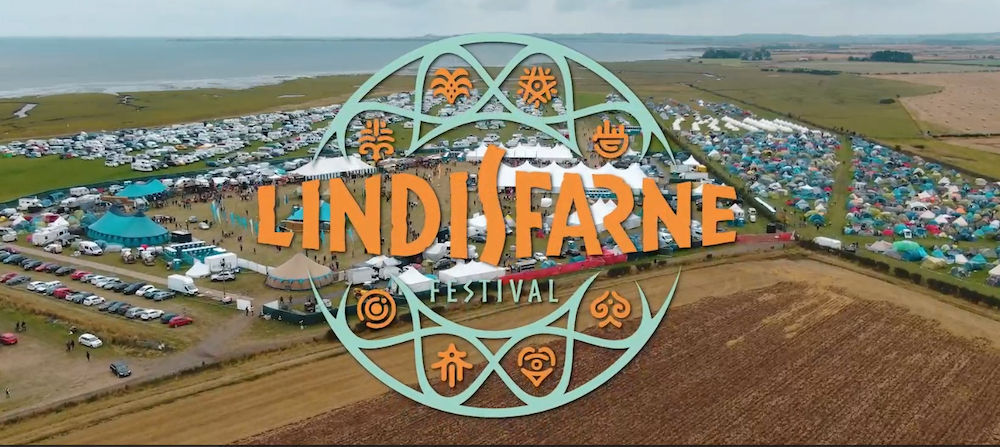
Throughout the year, Holy Island plays host to a variety of events and festivities that showcase its rich cultural heritage and vibrant community spirit.
Lindisfarne Festival: Join the festivities at the Lindisfarne Festival, a multi-day music and arts extravaganza that celebrates creativity, community, and connection. Set against the stunning backdrop of Holy Island, this annual event features live music performances, art installations, workshops, and more, drawing visitors from near and far to experience the magic of the island.
St. Cuthbert’s Day: Pay homage to the patron saint of Northumbria at St. Cuthbert’s Day celebrations held on Holy Island and in nearby towns. Festivities include religious services, processions, historical reenactments, and cultural events that honor the legacy of this revered figure in Northumbrian history.
Seasonal Activities and What to Expect During Different Times of the Year
Each season brings its own unique charm and opportunities for exploration on Holy Island, with a range of activities and experiences to enjoy throughout the year.
Spring: As nature awakens from its winter slumber, Holy Island bursts into life with vibrant blooms, migrating birds, and longer days perfect for outdoor adventures. Spring is an ideal time for birdwatching, nature walks, and exploring the island’s historic landmarks in mild weather conditions.
Summer: Summer on Holy Island is a time of bustling activity and sunny days spent by the sea. Visitors can soak up the sun on sandy beaches, enjoy picnics in picturesque spots, and partake in water sports such as kayaking and paddleboarding. Cultural events and festivals abound, offering entertainment for all ages against the backdrop of long summer evenings.
Autumn: As the leaves begin to turn and the air takes on a crisp edge, Holy Island’s landscapes are transformed into a tapestry of golden hues. Autumn is a time for scenic walks, wildlife watching, and sampling seasonal delicacies such as freshly caught seafood and hearty stews. Visitors can also immerse themselves in local harvest festivals and culinary events celebrating the bounty of the season.
Winter: Winter brings a sense of tranquility to Holy Island, with fewer crowds and a peaceful atmosphere perfect for reflection and contemplation. Storm watching along the rugged coastline, cozy evenings by the fire in traditional pubs, and exploring historic sites shrouded in mist are just some of the enchanting experiences that await visitors during the winter months.
Accommodation Options
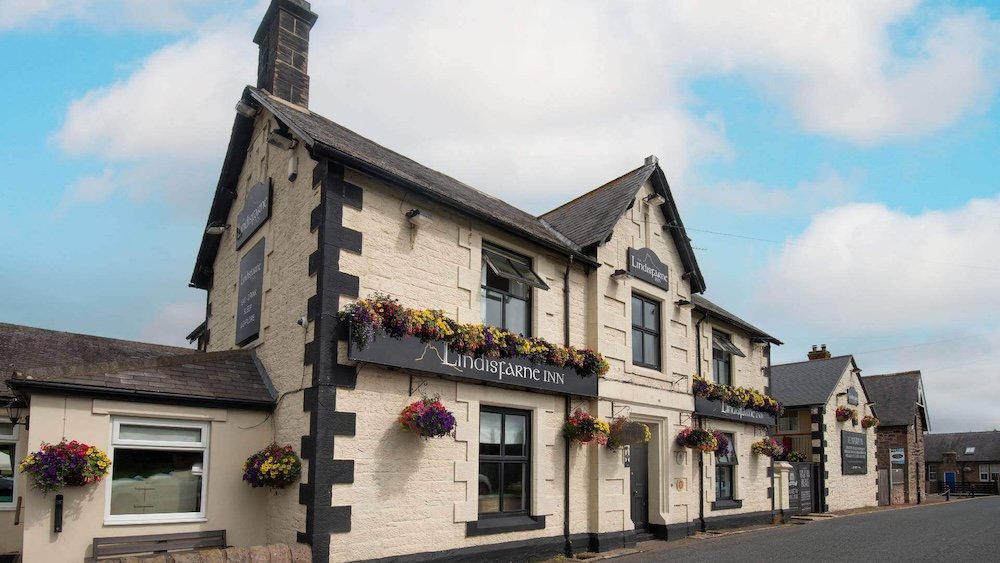
Holy Island offers a range of accommodations to suit every traveler’s preferences and budget, from cozy bed and breakfasts to charming rental cottages and historic inns.
Hotels: Experience comfort and convenience at one of Holy Island’s hotels, where guests can enjoy amenities such as ensuite rooms, on-site dining options, and personalized service. Whether seeking a boutique hotel with modern amenities or a historic inn steeped in tradition, there’s a hotel to suit every taste.
Bed and Breakfasts (B&Bs): Immerse yourself in the warm hospitality of Holy Island’s bed and breakfasts, where hosts welcome guests into their homes and provide comfortable accommodations and hearty breakfasts to start the day. From quaint cottages to elegant Victorian homes, B&Bs offer a cozy and intimate lodging experience.
Rental Cottages: Enjoy the freedom and flexibility of a self-catering holiday by renting a cottage on Holy Island. These charming properties range from traditional stone cottages with sea views to modern retreats nestled in the countryside, providing a home away from home for families, couples, and groups.
Tips for Booking During Peak Seasons
Planning a visit to Holy Island during peak seasons requires careful consideration and advance booking to secure accommodations and make the most of your stay.
- Book Early: Accommodations on Holy Island can fill up quickly during peak seasons, especially during summer months and holidays. To avoid disappointment, it’s recommended to book your stay well in advance, ideally several months ahead of your planned visit.
- Flexible Dates: If possible, consider traveling during off-peak times or weekdays when accommodations may be more readily available and rates may be lower. Flexible travel dates increase your chances of finding suitable lodging options.
- Explore Nearby Areas: If accommodations on Holy Island are fully booked, consider staying in nearby towns such as Berwick-upon-Tweed or Beal, which offer a range of lodging options within easy reach of the island.
Recommendations for Various Budgets and Preferences
Whether you’re seeking a luxurious retreat or a budget-friendly getaway, Holy Island offers accommodations to suit every traveler’s needs and preferences.
- Luxury Retreats: Treat yourself to a luxury retreat at one of Holy Island’s upscale hotels or boutique guesthouses, where you can enjoy deluxe amenities, stunning sea views, and personalized service.
- Budget-Friendly Options: Travelers on a budget can find affordable accommodations at bed and breakfasts, guesthouses, and self-catering cottages on Holy Island. Look for special deals and discounts offered during off-peak times to maximize savings.
- Family-Friendly Accommodations: Families traveling with children can opt for spacious rental cottages or family-friendly hotels with amenities such as family rooms, onsite playgrounds, and kid-friendly dining options.
Shopping and Local Handicrafts

Explore the vibrant arts and crafts scene on Holy Island by visiting shops and galleries showcasing the work of local artists and artisans.
The Lindisfarne Centre: Browse the artisanal offerings at The Lindisfarne Centre, where visitors can find a curated selection of handmade crafts, artworks, and gifts inspired by the island’s rich history and natural beauty. From locally crafted jewelry to hand-painted ceramics, there’s something for every taste and budget.
The Pilgrims Coffee House Gift Shop: Peruse the eclectic collection of gifts and souvenirs at The Pilgrims Coffee House Gift Shop, located adjacent to the cafe. Discover unique items ranging from handcrafted textiles to locally sourced food products, all made with care and attention to detail by talented artisans from the region.
Best Buys on Holy Island (Crafts, Souvenirs, Religious Items)
Take home a piece of Holy Island’s heritage with a variety of crafts, souvenirs, and religious items available for purchase.
Celtic Crosses: Shop for intricately carved Celtic crosses, symbolic of Holy Island’s Christian heritage and spiritual significance. These timeless symbols of faith make meaningful keepsakes and decorative accents for the home.
Seashell Jewelry: Adorn yourself with jewelry crafted from seashells collected along Holy Island’s shores, a beautiful reminder of the island’s coastal beauty and natural treasures.
Lindisfarne Mead: Bring home a bottle of Lindisfarne Mead, a historic beverage with roots dating back to the time of the monks at Lindisfarne Priory. Available for purchase at local shops and gift shops, Lindisfarne Mead makes a unique and flavorful souvenir of your visit to the island.
Operating Hours and Best Times to Shop
Plan your shopping excursion on Holy Island with consideration for operating hours and peak times to ensure an enjoyable and stress-free experience.
Operating Hours: Most shops and galleries on Holy Island operate on seasonal schedules, with varying hours depending on the time of year. During peak tourist seasons, shops may extend their hours to accommodate increased foot traffic, while offseason hours may be more limited.
Best Times to Shop: To avoid crowds and enjoy a leisurely shopping experience, consider visiting shops during weekday mornings or late afternoons when tourist activity tends to be lower. Alternatively, shop during off-peak seasons such as spring or autumn when the island is less crowded but shops are still open for business.
By exploring the diverse array of shops and galleries on Holy Island and planning your shopping excursions strategically, you can discover unique treasures and souvenirs that capture the essence of this enchanting destination.
Practical Tips and Travel Advice

Be prepared for the ever-changing weather conditions on Holy Island by packing accordingly and planning for outdoor activities.
Weather Patterns: Holy Island experiences a maritime climate, characterized by mild temperatures, occasional rain showers, and brisk coastal winds. Be sure to check the local weather forecast before your trip and pack layers to accommodate fluctuating temperatures.
Essential Items: In addition to clothing suitable for variable weather conditions, consider packing essentials such as sunscreen, a hat, sturdy walking shoes, and a waterproof jacket or umbrella. If you plan to engage in outdoor activities such as hiking or birdwatching, pack binoculars, a camera, and a reusable water bottle.
Accessibility Information for Visitors with Disabilities
Holy Island welcomes visitors of all abilities and strives to provide accessible facilities and services to ensure an inclusive experience for everyone.
Access Information: While some areas of Holy Island, such as the village center and Lindisfarne Priory, are accessible to visitors with mobility challenges, others, such as the castle and coastal paths, may present obstacles for wheelchair users or those with limited mobility. Be sure to inquire about accessibility options when planning your visit and consult accessibility guides for detailed information.
Transportation: Public transportation options to Holy Island may vary in terms of accessibility for visitors with disabilities. If traveling by car, designated parking areas for visitors with disabilities are available near the village center.
Safety Tips and Local Regulations
Prioritize your safety and well-being during your visit to Holy Island by familiarizing yourself with local regulations and taking necessary precautions.
Tide Times: Pay close attention to tide times and causeway crossing guidelines to avoid becoming stranded by the incoming tide. Plan your visit to coincide with low tide and allow sufficient time to safely cross to and from the island.
Coastal Safety: Exercise caution when exploring Holy Island’s coastal areas, especially during inclement weather or high tide conditions. Stay on designated paths and avoid venturing onto rocky cliffs or unstable terrain.
Respect Wildlife: Holy Island is home to a variety of bird species and other wildlife. Observe animals from a safe distance and refrain from disturbing or feeding them. Be mindful of nesting birds and follow local guidelines for wildlife protection.
Conclusion
From ancient ruins to sandy beaches, Holy Island captivates visitors with its rich history, stunning landscapes, and vibrant cultural scene.
Explore historic landmarks such as Lindisfarne Priory and Castle, immerse yourself in nature along scenic walking trails, and indulge in local cuisine and artisanal crafts.
Whether you’re seeking spiritual reflection, outdoor adventure, or simply a peaceful retreat, Holy Island offers something for everyone to enjoy.
As you explore the wonders of Holy Island, remember to tread lightly and respect the island’s natural and historical heritage.
Take care to follow local regulations, protect wildlife habitats, and leave no trace of your visit behind.
By acting as responsible stewards of this precious environment, we can ensure that future generations can continue to experience the magic of Holy Island for years to come.
- Plan Ahead: Research attractions, accommodations, and transportation options in advance to make the most of your visit.
- Check Tide Times: Consult tide tables and causeway crossing guidelines to ensure safe passage to and from the island.
- Embrace Nature: Take time to explore Holy Island’s natural beauty, from windswept beaches to rugged coastal cliffs.
- Immerse Yourself in History: Delve into the island’s rich history and cultural heritage by visiting historic landmarks and museums.
- Support Local Businesses: Shop for souvenirs and dine at local eateries to support the island’s economy and community.

FAQ’s About the Holy Island of Lindisfarne:
Is it worth visiting Holy Island?
Absolutely! Holy Island, also known as Lindisfarne, is a unique and captivating destination that offers a rich tapestry of history, nature, and spirituality.
From its ancient ruins and historic landmarks to its stunning coastal landscapes and vibrant cultural scene, there’s something for everyone to enjoy on Holy Island.
Can you drive into Holy Island?
Yes, you can drive onto Holy Island via the causeway that connects it to the mainland.
However, it’s important to pay close attention to tide times and causeway crossing guidelines, as the causeway is only accessible at certain times depending on the tides.
Be sure to check tide tables and plan your visit accordingly to avoid getting stranded by the incoming tide.
Why is Holy Island famous?
Holy Island is famous for its rich history and religious significance.
It was the site of the early medieval Lindisfarne Priory, founded by Irish monk Saint Aidan in the 7th century, which played a key role in the spread of Christianity throughout the region.
The island is also known for its picturesque Lindisfarne Castle, stunning coastal scenery, and vibrant arts and crafts scene.
Can you stay overnight on Holy Island?
Yes, there are accommodation options available for visitors who wish to stay overnight on Holy Island.
These include hotels, bed and breakfasts, and rental cottages, providing a range of choices to suit different preferences and budgets.
It’s advisable to book your accommodation in advance, especially during peak tourist seasons, to ensure availability.
How long does it take to walk across the causeway to Holy Island?
The causeway to Holy Island is approximately 3 miles long, and the walk from the mainland to the island typically takes around 30 minutes to 1 hour, depending on your walking speed and the conditions of the causeway.
It’s important to allow sufficient time for your walk and to check tide times to ensure safe passage.
How long do I need to spend on Holy Island?
The amount of time you’ll want to spend on Holy Island depends on your interests and preferences.
While some visitors may be content with a brief visit to see the main attractions, such as Lindisfarne Priory and Castle, others may prefer to spend a full day exploring the island’s natural beauty, historical sites, and cultural offerings.
How much does it cost to go to Holy Island?
There is no admission fee to visit Holy Island itself, but there may be charges for parking, attractions, and amenities such as tours or museum entry.
These costs can vary depending on the season and individual preferences. Additionally, visitors should consider expenses such as accommodation, meals, and souvenirs.
Is there toilets on Holy Island?
Yes, there are public toilets available for visitors on Holy Island, located near the village center.
These facilities provide basic amenities and are maintained for the convenience of visitors exploring the island.
Can you walk along the road to Holy Island?
Yes, visitors have the option to walk along the causeway road to Holy Island when the tide is out and the causeway is accessible.
However, it’s essential to exercise caution and be aware of oncoming vehicles, as the causeway is used by both pedestrians and vehicles.
Additionally, it’s advisable to check tide times and causeway crossing guidelines before setting out on your walk.
